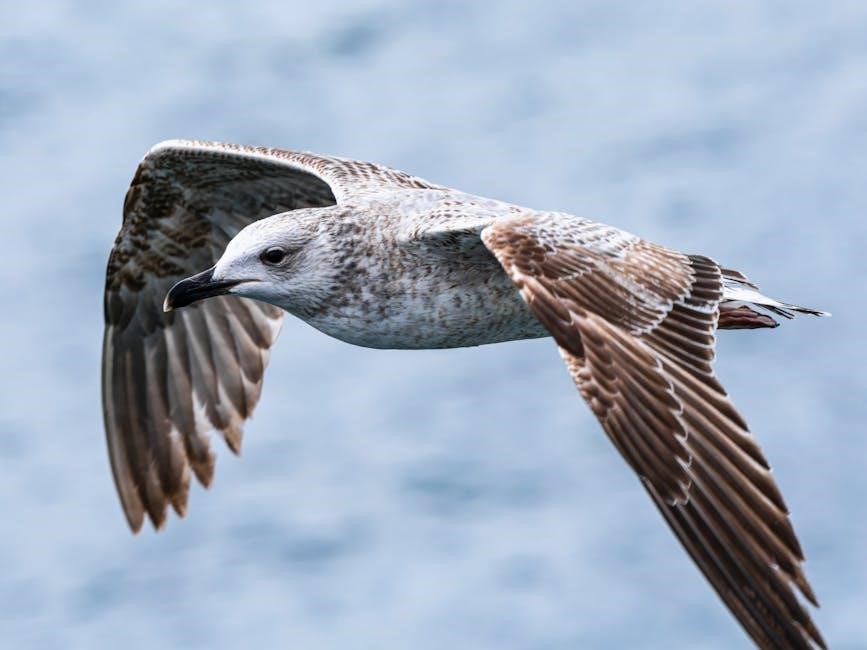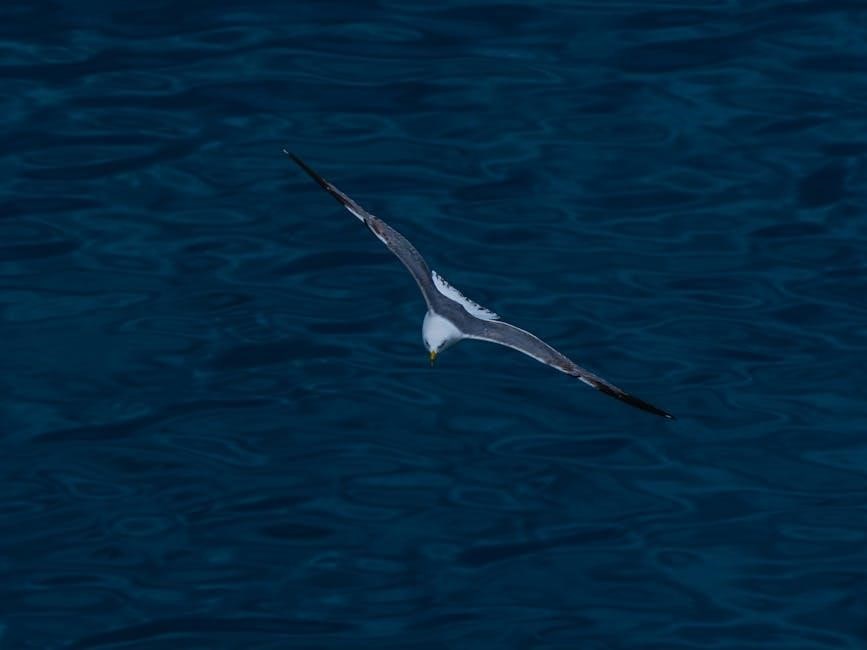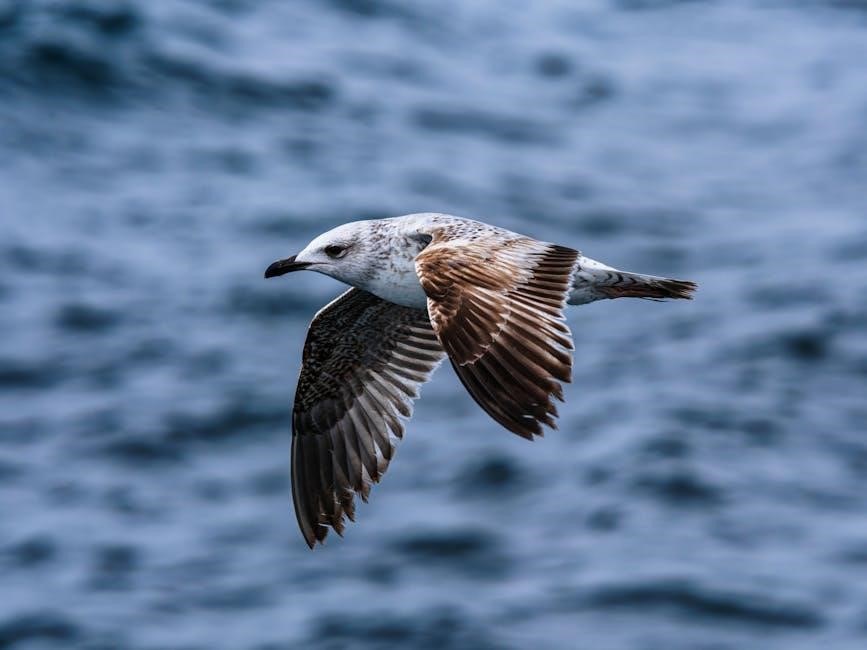Welcome to the Dometic Marine Air Conditioner Manual, your comprehensive guide for installing, operating, and maintaining your marine cooling system. This manual covers models like Turbo and EnviroCool, ensuring optimal performance and longevity through detailed instructions and safety guidelines.
1.1 Overview of the Dometic Marine Air Conditioner System
The Dometic Marine Air Conditioner System is a high-performance cooling solution designed for marine applications, offering superior comfort and reliability in harsh environments. It includes models like Turbo, Voyager, Vector Compact, EnviroCool, and Low Profile, each engineered to provide quiet operation and efficient cooling. These self-contained units combine advanced technology with durable construction to ensure consistent performance. The system is designed to withstand marine conditions, providing a comfortable indoor climate while minimizing noise. Key features include energy-efficient operation, easy installation, and compatibility with various marine electrical systems. The air conditioner must be properly grounded to the boat’s bonding system to prevent corrosion from stray currents. This system is ideal for boat owners seeking a reliable and efficient cooling solution that enhances onboard living conditions.
1.2 Importance of the User Manual for Proper Installation and Operation
The user manual is essential for the correct installation, operation, and maintenance of your Dometic Marine Air Conditioner. It provides detailed instructions, safety guidelines, and troubleshooting tips specific to your model, ensuring optimal performance and longevity. Proper installation is critical to avoid issues like premature failure or unsatisfactory performance. The manual covers models such as Turbo, Voyager, and EnviroCool, offering tailored guidance for each system. By following the manual, you can ensure compliance with safety standards, proper grounding, and electrical connections. It also helps users understand system features, energy efficiency, and troubleshooting procedures. Referencing the manual prevents errors and ensures your air conditioner operates efficiently, providing a comfortable marine environment. Always consult the manual before starting any installation or operation to guarantee safety and system reliability.
Installation Guidelines
Ensure proper installation of your Dometic Marine Air Conditioner by following the manual’s detailed instructions for models like Turbo, Voyager, and EnviroCool. Proper grounding and electrical connections are crucial for safe operation and to prevent corrosion from stray currents. The manual provides step-by-step guidance for pre-installation checks, installation processes, and post-installation testing to ensure optimal performance and longevity of your marine cooling system.
2.1 Pre-Installation Checks and Requirements
Before installing your Dometic Marine Air Conditioner, ensure compatibility with models like Turbo, Voyager, or EnviroCool. Verify electrical requirements, including voltage and amperage, to match your boat’s system. Proper grounding is essential to prevent corrosion from stray currents. Check that the unit is connected to the boat’s bonding system and ensure all electrical connections meet marine safety standards. Inspect the installation site for adequate space, ventilation, and drainage. Review the manual for specific pre-installation checks tailored to your model. Ensure all components, such as refrigerant lines and ducting, are compatible and undamaged. Familiarize yourself with local regulations and safety guidelines to avoid installation issues. Proper preparation ensures a safe and efficient installation process.
2.2 Step-by-Step Installation Process
Begin by mounting the Dometic Marine Air Conditioner unit in a well-ventilated area, ensuring it is level and securely fastened. Connect the electrical supply, adhering to the specified voltage and amperage requirements for your model. Properly ground the unit to the boat’s bonding system to prevent corrosion. Install the refrigerant lines, ensuring they are correctly sized and routed to avoid kinking or damage. Connect the ducting system, securing all joints with approved materials. Follow the manual’s instructions for model-specific configurations, such as those for Turbo, Voyager, or EnviroCool systems. After all connections are made, perform a visual inspection to ensure integrity. Finally, power on the system and test its operation under load to confirm proper function. Always follow marine safety standards and consult a professional if unsure about any step.
2.3 Post-Installation Testing and Verification

After completing the installation, perform a thorough system test to ensure proper functionality. Start by checking the electrical connections for correct voltage and amperage. Verify that the unit is properly grounded to the boat’s bonding system to prevent corrosion. Inspect the refrigerant lines for leaks and ensure they are securely connected. Test the ducting system for airflow and check for any leaks or obstructions. Power on the air conditioner and test all operating modes, including cooling, fan, and heating (if applicable). Monitor the system’s performance under load to ensure it operates smoothly and quietly. Check for any unusual noises or vibrations, which could indicate misalignment or loose connections. Finally, review the installation against the manual’s guidelines to confirm compliance. Document the test results and schedule a follow-up inspection to ensure long-term reliability.
Operating the Dometic Marine Air Conditioner
Operating the Dometic Marine Air Conditioner involves understanding the controls, utilizing system features, and following energy efficiency tips for optimal performance and longevity. The manual provides detailed guidance.
3.1 Getting Started with the Air Conditioner Controls
Getting started with the Dometic Marine Air Conditioner controls involves familiarizing yourself with the control panel, which features intuitive buttons and a digital display. Begin by turning on the power and selecting your desired mode, such as cooling, heating, or fan-only operation. Use the temperature adjustment buttons to set your preferred climate, and adjust the fan speed for optimal airflow. The control panel also allows you to monitor the system’s status and adjust advanced settings, such as timer functions or energy-saving modes. Always refer to the manual for specific instructions tailored to your model, ensuring safe and efficient operation. Proper use of the controls will enhance performance, comfort, and energy efficiency, making your marine experience more enjoyable. By following the guidelines, you can maximize the system’s potential and extend its lifespan.
3.2 Understanding the System’s Features and Functions
The Dometic Marine Air Conditioner is designed to provide superior cooling performance and quiet operation, making it ideal for marine environments. Key features include advanced temperature control, multiple fan speeds, and energy-efficient modes to optimize performance. The system is available in models such as Turbo, EnviroCool, and Low Profile, each tailored to specific marine applications. It incorporates a self-contained design, ensuring easy installation and minimal space requirements. The air conditioner also features advanced sensors to monitor and maintain consistent indoor climate conditions, even in extreme temperatures. Additionally, the system includes a user-friendly control panel for easy operation and customization. These features ensure reliable cooling, reduced noise levels, and energy savings, making the Dometic Marine Air Conditioner a top choice for marine enthusiasts seeking comfort and durability. Understanding these features will help you maximize the system’s benefits and enjoy a comfortable on-board experience.
3.3 Energy Efficiency and Optimal Performance Tips
To maximize energy efficiency and performance of your Dometic Marine Air Conditioner, ensure proper installation and regular maintenance. Use energy-efficient modes to reduce power consumption while maintaining comfort. Keep the thermostat at optimal settings to avoid overcooling, which can increase energy use. Regularly clean or replace air filters to improve airflow and system efficiency. Ensure the unit is properly sized for your marine space to avoid unnecessary energy consumption. Additionally, consider upgrading to newer models with advanced energy-saving features. Proper grounding and electrical connections are crucial for efficient operation. By following these tips, you can enjoy reliable cooling while minimizing energy costs and extending the system’s lifespan. These practices not only enhance performance but also contribute to environmental sustainability, making your marine adventures more eco-friendly and cost-effective.
Maintenance and Upkeep
Regular maintenance ensures longevity and efficiency for your Dometic Marine Air Conditioner. Clean air filters, check refrigerant levels, and ensure proper functioning. The manual provides detailed guidance.

4.1 Routine Maintenance Tasks for Longevity
Regular maintenance is crucial for extending the lifespan of your Dometic Marine Air Conditioner. Start by cleaning or replacing air filters to ensure proper airflow and efficiency. Check refrigerant levels and top them up if necessary, following safety guidelines to avoid leaks. Inspect electrical connections and ensure they are secure to prevent malfunctions. Drain pans and condensate lines should be cleared to avoid water buildup, which can lead to corrosion or mold growth. Additionally, inspect the compressor and fan for dust or debris, cleaning them as needed. Refer to the manual for specific instructions tailored to your model. Proper upkeep not only enhances performance but also prevents premature wear and tear, ensuring your system runs smoothly for years. By following these routine tasks, you can maintain optimal cooling and reliability in marine environments.
4.2 Cleaning and Replacing Air Filters

Cleaning and replacing air filters is essential for maintaining the efficiency and performance of your Dometic Marine Air Conditioner. Dirty filters can reduce airflow, lower cooling efficiency, and increase energy consumption. Start by turning off the system and locating the filters, usually found in the return air duct or grille. Gently remove the filters and vacuum or wash them with mild detergent and water. Allow them to dry completely before reinstalling to prevent mold or bacteria growth. If filters are damaged or heavily soiled, replace them with Dometic-approved parts to ensure optimal performance. Regular filter maintenance not only improves indoor air quality but also prevents strain on the system, extending its lifespan. Refer to your manual for specific instructions on filter locations and replacement intervals tailored to your model.
4.3 Checking and Replenishing Refrigerant Levels
Regularly checking and replenishing refrigerant levels is crucial for maintaining the performance and efficiency of your Dometic Marine Air Conditioner. Low refrigerant levels can lead to reduced cooling capacity, increased energy consumption, and potential system damage. To check the refrigerant levels, ensure the system is turned off and the boat is in a well-ventilated area. Use a manifold gauge set to measure the pressure according to the manufacturer’s specifications. If the levels are low, refrigerant must be added by a certified technician to avoid contamination or overcharging. Always use the refrigerant type recommended in your manual. After replenishing, inspect the system for leaks to prevent future issues. Proper refrigerant management ensures optimal cooling, reduces wear on components, and extends the lifespan of your air conditioning system. Refer to your manual for detailed instructions and safety precautions.

Troubleshooting Common Issues
This section provides solutions for common issues, error codes, and DIY repairs. It helps users identify problems quickly and restore functionality to their Dometic Marine Air Conditioner, ensuring optimal performance and minimizing downtime.
5.1 Identifying and Diagnosing Common Problems
Identifying and diagnosing common issues with your Dometic Marine Air Conditioner is crucial for maintaining optimal performance. Start by reviewing the error codes provided in the manual, as they often indicate specific malfunctions. Common problems include refrigerant leaks, faulty sensors, or electrical faults. Check for symptoms like reduced cooling, unusual noises, or water leaks. Use the troubleshooting guide to isolate the issue. For example, if the unit isn’t cooling, ensure proper refrigerant levels and inspect for blockages in air vents. Basic diagnostics can often resolve issues like faulty thermostats or sensors. If problems persist, consult the manual or contact a professional. Regular maintenance, such as cleaning filters and checking connections, can prevent many issues. Always refer to the manual for model-specific guidance to ensure accurate diagnosis and effective solutions.
5.2 Error Codes and Their Meanings
Dometic Marine Air Conditioner error codes are essential for quick and accurate troubleshooting. These codes indicate specific issues, such as sensor malfunctions, refrigerant level problems, or electrical faults. For example, an “E1” error may signal a low refrigerant level, while “E3” could indicate a faulty temperature sensor. Refer to the manual for a detailed list of codes and their meanings. Understanding these codes helps users identify the root cause of a problem, enabling timely repairs. Some issues, like sensor errors, can be resolved with basic tools, while others may require professional assistance. Always consult the manual for model-specific error codes, as they may vary. Addressing errors promptly ensures optimal performance and prevents further damage to the system. Regular maintenance can also help minimize the occurrence of these issues.
5.3 DIY Repairs and When to Call a Professional
While some issues with your Dometic Marine Air Conditioner can be resolved through DIY repairs, others require professional expertise. Simple fixes, such as cleaning air filters or checking for blockages, can often be done with basic tools. However, complex problems like refrigerant leaks, compressor failures, or electrical issues should only be handled by certified technicians. Attempting advanced repairs without proper knowledge can lead to further damage or safety hazards. Always refer to the manual for guidance on troubleshooting and repairs. If unsure, contact Dometic customer support for assistance. Regular maintenance and timely professional interventions ensure the system runs efficiently and prolong its lifespan. DIY repairs are cost-effective for minor issues, but major problems demand expert care to guarantee safety and optimal performance.

Safety Precautions and Guidelines
Ensure electrical safety by proper grounding to prevent corrosion. Handle refrigerants with care, following guidelines to avoid hazards. Always disconnect power before servicing to maintain a safe working environment.
6.1 Electrical Safety and Grounding Requirements
Electrical safety is paramount when installing and operating your Dometic marine air conditioner. Proper grounding is essential to prevent corrosion caused by stray electrical currents. Ensure the air conditioning unit’s AC ground is securely connected to the boat’s AC ground system. This connection prevents electrolysis and ensures safe operation. All electrical connections must be secure, tight, and meet marine electrical standards to avoid fire hazards or system malfunctions. Improper grounding can lead to premature component failure or safety risks. Always disconnect the power supply before performing any maintenance or repairs. Consult a licensed marine electrician if you are unsure about any aspect of the electrical installation. Adhering to these guidelines ensures a safe and reliable operating environment for your marine air conditioning system.
6.2 Proper Handling of Refrigerants and Chemicals

Proper handling of refrigerants and chemicals is critical for safety and environmental protection. Always follow the manufacturer’s guidelines and safety protocols when working with refrigerants. Wear appropriate protective equipment, including gloves and safety goggles, to prevent skin and eye irritation. Ensure the area is well-ventilated to avoid inhaling harmful fumes. Refrigerants must be handled in accordance with environmental regulations to prevent ozone layer depletion. Never overcharge the system, as this can lead to system damage or refrigerant leaks. Dispose of refrigerants and chemicals responsibly, adhering to local and international environmental standards. Improper disposal can result in severe environmental harm. For complex tasks, consult a certified technician to ensure compliance with safety and environmental regulations. Proper handling ensures the longevity of your marine air conditioning system and protects both people and the environment.

6.3 Emergency Shutdown Procedures
In case of an emergency, such as a refrigerant leak, electrical malfunction, or system overpressure, follow these shutdown procedures immediately. First, disconnect the power supply to the air conditioning unit at the circuit breaker or main electrical panel. Next, switch off the thermostat or control unit to halt all system operations. Ensure the area is ventilated to prevent the accumulation of harmful gases. Do not attempt to repair the system yourself; instead, contact a certified marine technician. If the issue involves refrigerants, evacuate the area and avoid direct contact. Keep emergency contact numbers handy for quick assistance. Regular maintenance can help prevent such emergencies, but being prepared is crucial for safety. Always refer to the manual for specific shutdown instructions tailored to your Dometic marine air conditioner model.

Warranty and Support Information
Dometic offers a comprehensive warranty program for marine air conditioners, covering parts and labor for specified periods. Register your product online to activate warranty benefits and access dedicated customer support for assistance with repairs, troubleshooting, and maintenance. For more details, visit the Dometic website or contact their support team directly.
7.1 Overview of the Dometic Warranty Program
The Dometic Warranty Program provides coverage for marine air conditioners, ensuring protection for your investment. The program typically includes a limited warranty covering parts and labor for a specified period, depending on the model and usage. Registration is required to activate warranty benefits, and proof of purchase may be necessary. The warranty covers defects in materials and workmanship under normal use and conditions. It’s essential to review the terms and conditions to understand what is included and any exclusions. Dometic’s warranty program is designed to offer peace of mind, ensuring your marine air conditioner operates efficiently for years to come. For detailed information, refer to the warranty section in your user manual or visit the Dometic website.
7.2 Registering Your Product for Warranty Coverage
Registering your Dometic marine air conditioner is essential to activate warranty benefits and ensure coverage. The process typically involves providing proof of purchase and product details. Visit the Dometic website or contact customer support to complete the registration. Accurate information is crucial to avoid delays. Once registered, you’ll receive confirmation, which should be kept with your records. Registration ensures your product is recognized under the warranty program, allowing you to access support and services. It also helps Dometic maintain accurate records for any future claims. For detailed steps, refer to the warranty section in your manual or the Dometic website. Proper registration guarantees you receive the full benefits of your warranty, including parts and labor coverage. Keep your registration confirmation safe for future reference.

7.3 Contacting Dometic Customer Support
For assistance with your Dometic marine air conditioner, contact customer support through various channels. Visit the Dometic website to find contact details, including phone numbers, email addresses, and live chat options. Ensure you have your product’s serial number and purchase details ready for efficient support. The website also offers a support section with FAQs, troubleshooting guides, and downloadable resources. For urgent issues, call the dedicated customer service hotline. Email inquiries are typically responded to within 24-48 hours. Additionally, Dometic’s online portal allows you to submit support tickets directly. Always verify the contact information matches your region for prompt assistance. Regularly check the website for updates or new support features. Reaching out to Dometic’s team ensures you receive expert help tailored to your marine air conditioning needs.
Congratulations! You’ve completed the Dometic Marine Air Conditioner Manual. This guide has provided comprehensive instructions for installation, operation, and maintenance, ensuring optimal performance and longevity. Refer to it for any future needs.
8.1 Summary of Key Points
This manual provides a comprehensive guide for the Dometic Marine Air Conditioner, covering installation, operation, and maintenance. It emphasizes proper electrical connections, grounding, and safety precautions to ensure reliable performance. Regular maintenance, such as cleaning filters and checking refrigerant levels, is crucial for longevity. Troubleshooting tips and error code interpretations help diagnose and resolve common issues. The manual also outlines warranty details and support options for assistance. By following the guidelines, users can optimize cooling efficiency and extend the system’s lifespan. Always refer to the manual for specific model instructions, such as Turbo and EnviroCool systems, to ensure compliance with safety standards and manufacturer recommendations.
8.2 Final Tips for Optimal Performance and Longevity
To ensure your Dometic Marine Air Conditioner operates efficiently and lasts longer, regular maintenance is essential. Clean or replace air filters as recommended to maintain airflow and cooling performance. Check refrigerant levels periodically and recharge if necessary to prevent system strain. Always follow proper electrical grounding and bonding procedures to avoid corrosion and electrical hazards. Monitor your unit’s usage patterns and adjust settings to balance comfort and energy consumption. Keep the exterior unit free from debris and ensure proper ventilation for optimal heat exchange. Stay updated with the latest software and firmware for enhanced functionality. Schedule annual professional inspections to identify potential issues early. By adhering to these guidelines and the manual’s instructions, you can enjoy reliable cooling and extend the lifespan of your marine air conditioning system.
